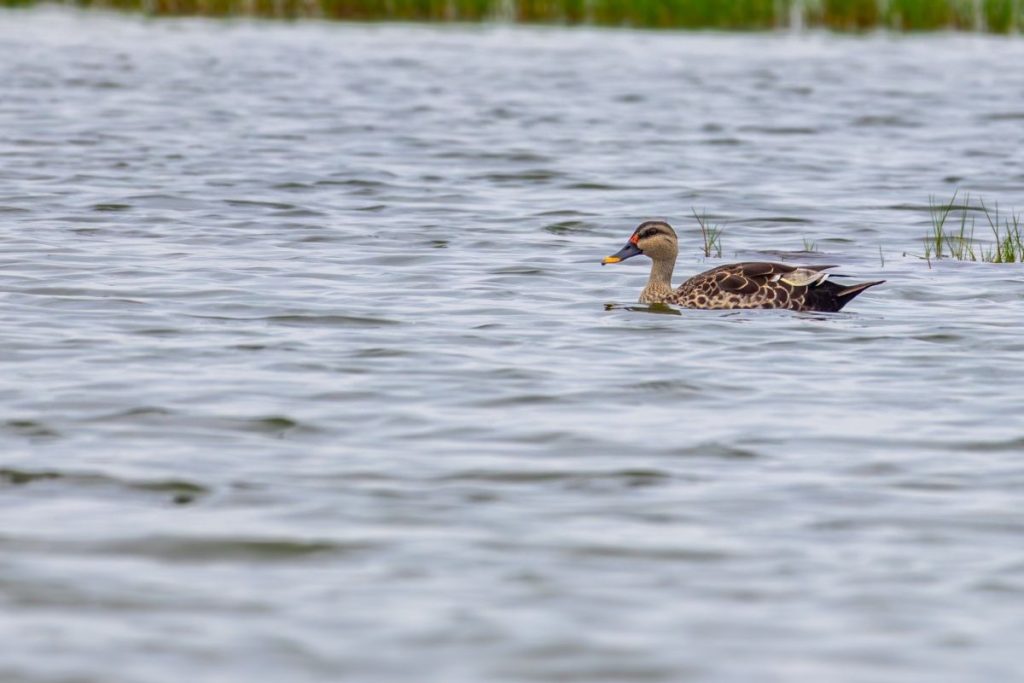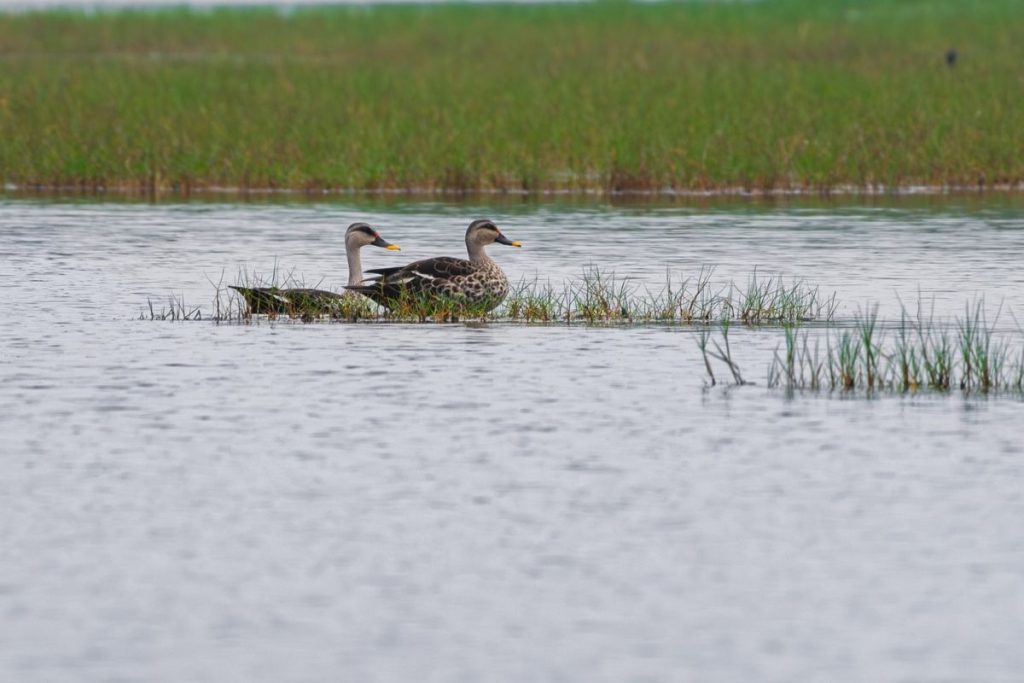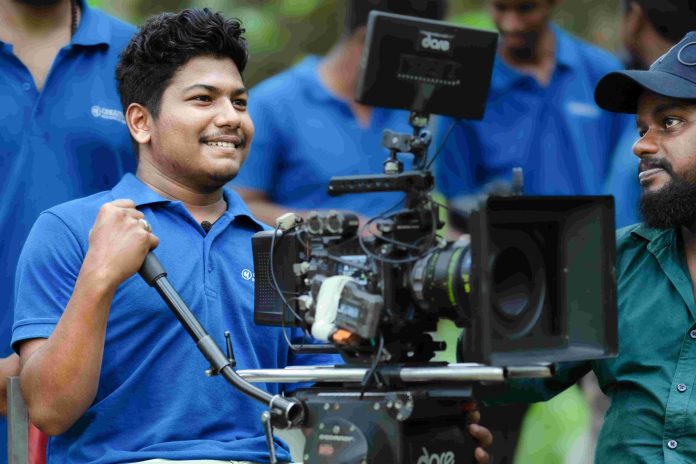The Indian spot-billed duck is a large duck found in freshwater wetlands across the Indian subcontinent. It has a red bill patch and green speculum. Breeding occurs from July to December, with 8-14 eggs. The duck feeds on plants and invertebrates, including rice, and can quickly take off or dive to avoid predators.
The Indian spot-billed duck (Anas poecilorhyncha) is a big, dabbling duck species that breeds in freshwater wetlands across the Indian subcontinent without migrating. The red patch at the base of the bill, which is present in mainland Indians, is the source of the term.

Quiet journey The spot-billed duck swims gently through water.
The green speculum with a wide white band at the base helps identify the bird in flight. The white tertials form a stripe on the side for long-distance recognition in water. It inhabits freshwater lakes and marshes in open areas. The bird forages for plant food at night or in the evening. In northern India, breeding is from July to September, and in southern India, from November to December, depending on rainfall and water quality.

Observant float Swimming calmly, the duck glances sideways for awareness.
The duck may raise more than one brood. It lays 8–14 eggs in a ground nest concealed by foliage near the water. Occasionally, the duck builds nests on creeper-covered tree limbs. The young hatch after 24 days, and the mother starts incubation after laying the last egg. The chicks are yellow-backed and black, resembling mallards but with a broader eye stripe.

Couple swim The loving duo swims peacefully on water.
Indian spot-billed ducks eat invertebrates, such as snails, and plants, especially rice crops. They quickly take off vertically from the water when disturbed and typically form pairs or small groups, separate from other species. They dive and stay underwater to avoid capture when shot at, especially during molting. Birds of prey and terrestrial predators like pythons and otters prey on them.
Copyrights : All the photos and texts in this post are the copyright of John Thomas and Creative Hut Institute of Photography and Film. Their reproduction, full or part, is forbidden without the explicit approval of the right owners.


